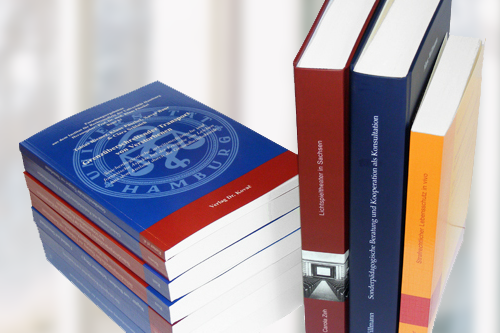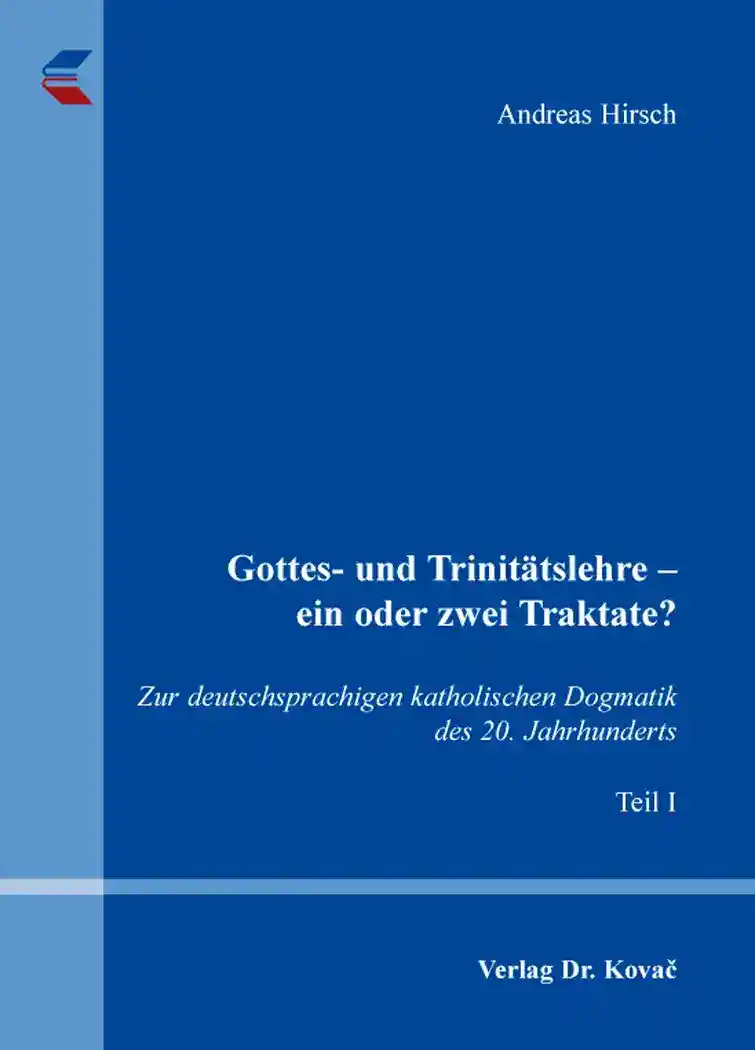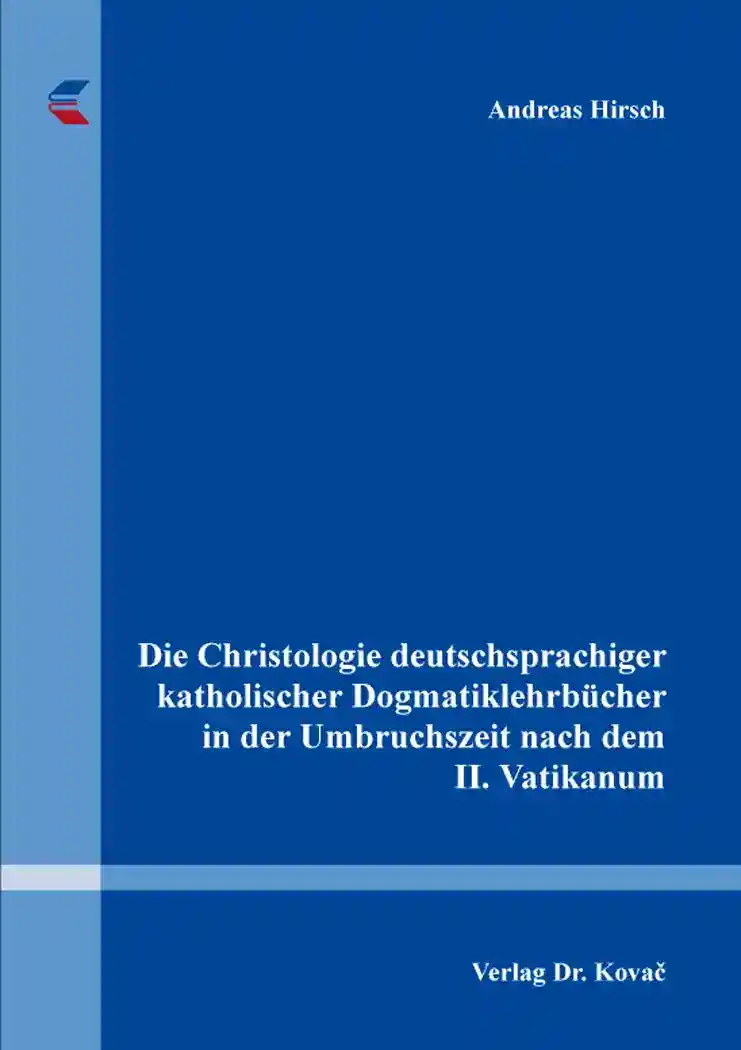Andreas HirschGottes- und Trinitätslehre – ein oder zwei Traktate?
Zur deutschsprachigen katholischen Dogmatik des 20. Jahrhunderts
THEOS – Studienreihe Theologische Forschungsergebnisse, volume 117
Hamburg 2014, 870 pages
ISBN 978-3-8300-7903-3 (print) |ISBN 978-3-339-07903-9 (eBook)
Rezension
[...] Die Doktorarbeit von Hirsch ist eine beachtliche Leistung. Jede Gesamtdarstellung der dogmatischen Gotteslehre des 20. Jahrhunderts wird sie zu berücksichtigen haben. [...] Die Darstellung ist übersichtlich, und jedes Kapitel bietet eine hilfreiche Zusammenfassung. Das Werk von P. Hirsch bringt nicht nur die formale Frage nach dem Verhältnis zwischen Gottes- und Trinitätslehre zur Geltung, sondern zeigt deren vielfältige Verbindung mit inhaltlichen Fragen, die über das ganze Werk wiederholt jeweils aus verschiedenen Perspektiven beleuchtet werden. Am zentralen Beispiel der Lehre über den einen und dreifaltigen Gott wird die gesamte Dogmatik der Gegenwart beleuchtet.
About this book deutschenglish
The relationship between the treatises on God and the Trinity was and still is disputed in dogmatic theology. In the early 1960s, Karl Rahner criticized the separation of these two treatises as well as the inadequate treatement of the Trinity in neo-scholasticism. In Rahner’s opinion, this separation is attributable to the Summa Theologiae of St. Thomas Aquinas, which, by the sixteenth century, had replaced the Sentences of Petrus Lombardus as a standard textbook. Michael Schmaus, on the other hand, sees the foundation for this separation already in the Sentences itself. The question here is whether one should maintain the common neo-classical model, embracing both treatises as does Michael Schmaus in his Katholische Dogmatik (1938-1965), or are there other alternatives? The present study treats this topic using Catholic German-language dogmatic textbooks of the twentieth century, including works on the history of theology. This method enables both an appraisal of Rahner’s thesis, as well as the tracing back of the textbooks considered to their antecedent models, both as regards content and structure. The twentieth century is chosen as the ambit of investigation because of pontifical documents like Aeterni Patris (1879), Doctor Angelici (1914), and the 1917 Code of Canon Law, all of which reinforced the existing „Thomistic-Renaissance“ of the previous century. In addition, the twentieth century offers a great variety of different dogmatic textbooks and the lines of thought that carried through the Second Vatican Council. In the dogmatic textbooks studied, the place of the treatises in relation not only to the entire work but in relation also to the internal structure of the work is described. Each follows an extensive analysis of the contents. In the methodology a certain representative analysis is respected, without pretense as to completeness. This procedure permits a demonstration of tendencies and developments, and brings into view the advantages and disadvantages of the individual models. Summary: The present study provides an overview of the relationship of the treatises on God and the Trinity in Catholic German-speaking dogmatic textbooks of the twentieth century, including their sources.Keywords
20. JahrhundertDe Deo uno et trinoDogmatikDogmengeschichteGotteslehreSystematische TheologieTheologieTraktatenproblematikTrinitätslehreIhr Werk im Verlag Dr. Kovač

Möchten Sie Ihre wissenschaftliche Arbeit publizieren? Erfahren Sie mehr über unsere günstigen Konditionen und unseren Service für Autorinnen und Autoren.
Weiteres Buch des Autors
Hamburg 2017, ISBN 978-3-8300-9705-1 (Print) |ISBN 978-3-339-09705-7 (eBook)
[...] Die Christologie in den katholischen Handbüchern der Dogmatik ist ein wenig behandeltes Thema, dem für den gewählten Zeitraum, die Umbruchszeit nach…

